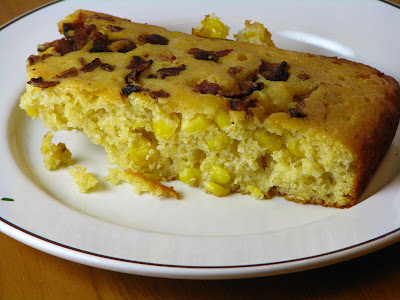Despite having lived in Canada for eleven years, I had never eaten a Nanaimo bar. In fact, I had barely heard of them. But according to this month’s DB hostess, the amazing Lauren from Celiac Teen (one of my favourite bloggers), Nanaimo bars are a quintessentially Canadian treat from British Columbia.
Having made these, I feel a little bit more Canadian. :-)

There were two parts to this challenge: the first was to bake the graham wafers necessary for the base layer of the bars, and the second was to assemble the bars themselves. Lauren’s baking is strictly gluten free, and she gave us instructions for baking gluten free graham wafers. However, she kindly gave us a wheat-based version as well. This was much appreciated, as I was unable to find sorghum flour in time, and ended up using wheat flour. But I was a bit disappointed at not being able to try my hand at gluten free baking: despite having no issues with gluten myself, it seemed like a really interesting experience, and definitely a challenge.
I had never made graham crackers or wafers, but the recipe was fairly straightforward. The dough was very forgiving and rolled like a dream. Also, it smelled amazing, thanks to the brown sugar and the honey: I was in olfactory heaven the whole time I was rolling it.
The only issue with the dough was that it was quite sticky. Therefore, I didn’t roll it too much, and my wafers were rather thicker than they should have been: more like cookies, really. The odd thing is, they still browned much faster than predicted, and I had to take them out of the oven way before the allotted time was over. They were still very soft, but firmed up as they cooled on a rack. And the taste was quite nice: not too sweet, with a hint of honey, and a snappy texture.

With the graham wafers done, the baking part of the challenge was technically over, but there were still bars to be made. Nanaimo bars consist in three layers. The bottom one is a mixture of graham wafer crumbs, cocoa, melted butter, chopped almonds, and shredded coconut. The middle is a kind of vanilla-flavoured custard and butter concoction. And the top is a simple chocolate glaze.
Now, the problem is, I’m not too big on vanilla custard – or vanilla anything, really, except in very specific conditions. So I decided to experiment a little, for once. As I was brainstorming for flavour ideas, I voiced my ideas out loud to my boyfriend Laurent (not to be confused with Lauren, our hostess ;-) ):
“What are your feelings on the peanut butter and chocolate combination?”
“Hmmm…” he replied. “It sounds good.”
“You make it sound like you’ve never had peanut butter with chocolate.”
“I haven’t.”
“You – You’ve never tried it? Not even in a Reese cup?”
“What’s that?”
Now, Laurent has lived in Canada nearly all his life, so this state of affairs may seem surprising. But there are two factors that can explain how he has managed to go through life without ever having eaten a Reese cup. For one thing, his father bakes, which means Laurent grew up with homemade desserts, not candy bars. Also, he didn’t have a sweet tooth as a child: I’m told he used to prefer olives to chocolate back then; it’s only recently that he’s developed a taste for desserts. So it makes sense that he has had very little contact with brand-name treats.
Still, I couldn’t allow him to be ignorant of the wonders of peanut butter and chocolate any longer. So I tweaked the original Nanaimo filling recipe, and made a peanut butter version (recipe below).

Also, I didn’t have a square 8x8 inch pan, only round cake pans. So my “Nanaimo bars” ended up being more like “Nanaimo torte wedges” – complete with crust!
And how did they taste? Honestly, better than I could have hoped for. It was, in two words, deliciously decadent. The almonds in the base could be substituted with other nuts, but the coconut is essential, both for taste and texture (gotta have that chewiness). The taste of peanut butter wasn’t quite as strong as I would have liked, but that was my fault; I’ve corrected the quantities in the recipe below, for a stronger taste. Other than that, I really enjoyed this bar (or wedge, or whatever), with all the different textures of the base, the creamy filling, and the intensely chocolatey taste. Next time, I might crush my graham wafers to bits, rather than grind them to crumbs, to add a crunchy texture to the rest.

Nanaimo bars are rich to begin with, and I suspect the addition of peanut butter didn’t help: one little slice at a time is enough. So these bars might last us a while, or we might end up distributing them among our friends. But I’m sure they will be very much appreciated, either way.
Thank you so much Lauren, for this really fun and tasty challenge! And for introducing me to an essential part of Canadian culture!
For the original challenge recipe, click here. And check out the other Daring Bakers’ Nanaimo bars over here!

Peanut butter filling
50g (1.75 oz, 1/4 cup) butter, cubed and softened
80ml (1/3 cup) smooth peanut butter
3 tbsp heavy cream
1 tsp vanilla extract
200g (1 1/2 cup) icing sugar
Cream the butter and peanut butter together until smooth and combined. Whisk in the cream and vanilla extract. Gradually whisk in the icing sugar until the mixture is homogenous.










